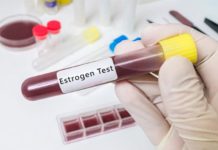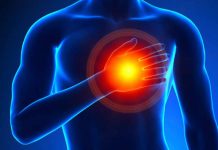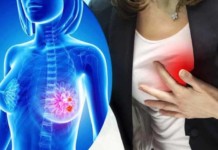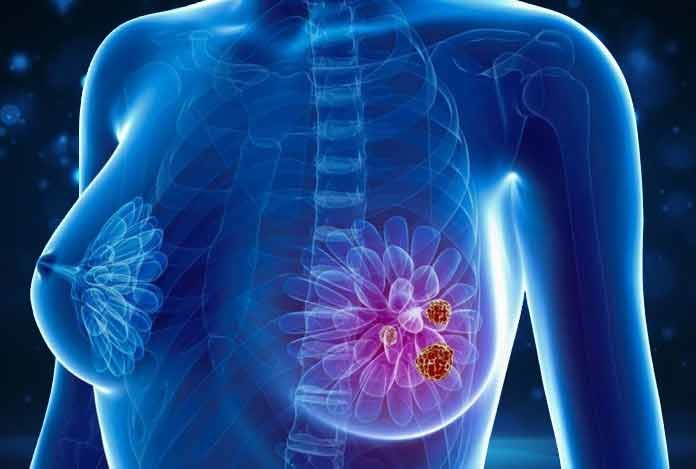
Breast Cancer is a malignant condition arising from the breast cells. Malignant is a scientific terminology for cancer which refers to uncontrolled growth of abnormal cells. It occurs when the old cells do not die, instead grow uncontrollably, forming new abnormal cells. These new abnormal cells, known as tumor cells bear the potential to invade and spread into other body parts. This process of dissemination of cancerous tumor cells into other body parts is scientifically termed as metastasis.
Breast cancer is the most invasive cancer in women. However, it is not an uncommon finding to find breast cancer in men. But, this article will provide an insight into breast cancer in women. As per recent statistical reports, every woman in US has a 12% chance of developing breast cancer sometime in her life. Breast cancer is the second most common cause of death in women (first being lung cancer). As per the American Cancer Society’s estimate, 2,66,120 new cases of breast cancer will be diagnosed in women in US in 2018.
A prior knowledge of normal breast anatomy is necessary to understand the pathogenesis of breast cancer. Breast is composed of adipose tissue (i.e. Fat) and glandular, milk-producing tissue. Adipose tissue determines the size of the breast. The milk-producing component of the breast is divided into 15 to 20 sections, known as lobes. Each lobe consists of smaller structures, known as lobules. These lobules produce milk. Milk, then travels through a network of small tubes, known as ducts. These smaller ducts join to form larger ducts and the milk finally exits the skin through nipples. The most common site of origin of breast cancer in women are these ducts.
Just like any other body part, breast also has a blood supply, nerve supply and lymphatic drainage. However, lymphatic drainage plays a significant role in the spread of cancer. Lymphatic system consists of lymph vessels and lymph nodes. All the toxins, waste and other unwanted materials of the body are filtered by the lymph nodes and transported throughout the body through the lymph vessels. The lymph nodes involved in the lymphatic drainage of the breast are those located in the armpits (medically known as axillary nodes). In breast cancer, the cancer cells enter the lymph vessels and can spread to other body parts. Thus, if a lymph node shows breast cancer cells during biopsy, it indicates that the cancer has spread to other body parts. Other modes of spread of cancer cells include through blood vessels, capillaries and through replication (a process by which abnormal cells produce more similar cells).
Breast cancer is more commonly seen in elderly women. However, young women may also develop it. Clinically, breast cancer manifests as a lump or a swelling in the breast and/or armpit. Thus, it is essential to seek medical help if such a lump is felt by a woman. The treatment of any cancer depends on the grade of tumor determined by microscopic examination of the tumor. In low-grade tumors, the tumor cells look similar to healthy cells and grow slowly, hence, are easier to treat. In contrast, high-grade tumors have tumor cells bearing no similarity with the normal healthy cells and tend to grow and spread rapidly, hence, are difficult to treat. However, with medical advances and growing awareness about the disease, Breast cancer is no longer a life-threatening condition. As per American Cancer Society’s estimate, breast cancer death rates have reduced to 39% from 1989 to 2015. At present, there are 3.1 million breast cancer survivors in US.
Types and Symptoms of Breast Cancer
Types of Breast Cancer:
Based on the site of origin and the invasive potential, breast cancer can be classified into the following different kinds:
- Ductal Carcinoma in Situ (DCIS): It is the most common non-invasive breast cancer. Ductal Carcinoma refers to “cancer arising in the duct of the breast” and in Situ refers to “in its original place”. Thus, as the name implies, this type of breast cancer originates and remains confined to the duct of the breast. It does not spread to normal adjoining tissues. Since it is a non-invasive cancer, it responds well to treatment. However, DCIS tends to recur. If left untreated, it may spread to adjoining healthy tissues.
- Invasive Ductal Carcinoma (IDC): It is the most common breast cancer accounting for 80% of all cases. It is also known as Infiltrative Ductal Carcinoma. As the name implies, it is an invasive carcinoma arising in the duct of breast. Unlike DCIS, it spreads to the surrounding healthy tissues. Based on the characteristics of the cancer, IDC are of several types.
- Tubular Carcinoma of the breast: This type of invasive ductal carcinoma contains tube-like structure within the tumor and is hence named tubular carcinoma. It accounts for 8 to 27% of cases. It is a low-grade tumor so is easy to treat. Although invasive, this type of tumor is less aggressive and does not tend to spread to the adjoining healthy breast tissue.
- Medullary Carcinoma of the breast: It is a rare type of invasive ductal carcinoma and accounts for 3 to 5% of all cases. This type of cancer manifests as soft, fleshy mass resembling a brain part called “medulla”. This cancer has an appearance of a high-grade tumor but behaves like a low-grade tumor i.e. its cells look highly abnormal and aggressive but it does not act like one. It tends to grow slowly and rarely spreads to healthy breast tissue. Hence, it responds well to treatment.
- Mucinous Carcinoma of the breast: The inner lining of the vital organs of human body are lined by a slimy and slippery substance called “mucous”. The key component of this mucous is a substance called “mucin”. In mucinous carcinoma of the breast, the cancer cells produce mucous, thus microscopically it shows cancer cells floating in a pool of mucin. It is a rare type of invasive ductal carcinoma. Only about 2 to 3% of breast cancers are purely mucinous i.e. they also have other types of cancer cells within the tumor. Around 5% of breast cancers are purely mucinous. This type of cancer is less aggressive and responds well to treatment.
- Papillary Carcinoma of the breast: It is a rare type of invasive ductal carcinoma accounting for about 1 to 2% of breast cancers. On microscopic examination, this cancer reveals well-defined borders and finger-like projections (called “papillae”). It is a medium-grade tumor i.e. shows an intermediate picture between low and high-grade tumor. In most cases, papillary carcinoma of the breast is accompanied by DCIS.
- Cribriform Carcinoma of the breast: Usually, 5 to 6% of invasive carcinoma may show a part of a tumor to be cribriform type. In this type of carcinoma, there are holes between the tumor cells, thus creating a swiss-cheese like appearance. It is a low-grade tumor and is easy to treat.
- Invasive Lobular Carcinoma (ILC): It is an invasive carcinoma arising in the lobules of the breast and involving the adjacent healthy breast tissue as well. It is also known as Infiltrative Lobular Carcinoma. It accounts for 10% of invasive breast cancers. If left untreated, this cancer can spread to lymph nodes and other parts of the body.
- Inflammatory Breast Cancer: It is a rare and an aggressive type of breast cancer. It accounts for 1% of all cases. It is characterized by redness and swelling of breast. It grows and spreads rapidly, thus making symptoms worse in hours to days. This type of breast cancer requires prompt treatment.
- Lobular Carcinoma in Situ (LCIS): It is characterized by an area of abnormal growth of cells which has not invaded the internal breast tissue. Hence, it is not a true breast cancer. It is considered to be an indication that the patient is at a greater risk of developing breast cancer in future. For this reason, experts prefer calling it “lobular neoplasia” (neoplasia refers to a collection of abnormal cells which has not developed into cancer).
- Paget’s Disease of the Nipple: It accounts for less than 5% of all breast cancer cases in US. It is characterized by a collection of abnormal cells in and around nipples. This cancer begins in the duct and then involves the surface of nipples and areola (dark area around the nipples), thus causing the nipples to become itchy, scaly, red and irritated. It is usually accompanied by other types of breast cancer such as DCIS or invasive cancer. It must be remembered that it is not associated with Paget’s disease of bone. Read more…
- Recurrent and Metastatic Breast Cancer: Recurrent breast cancer refers to a breast cancer that has recurred in the same breast or opposite breast or in the chest wall. Metastatic breast cancer refers to cancer that has spread to other body parts. Thus, recurrent and metastatic breast cancer signifies an advanced stage of breast cancer that is difficult to treat.

Symptoms of Breast Cancer
Breast cancer manifests as various signs and symptoms, which are described below.
- Breast or Armpit lump: The most common manifestation of breast cancer is a lump or a thickening on the breast or armpit. Any thickened area of the breast that does not feel similar to surrounding breast tissue can be suggestive of a breast cancer. Presence of a lump or thickening in the armpit is suggestive of spread of cancer to axillary lymph nodes (situated in armpits).
- Tenderness: Pain in the breast or armpit is also a symptom of breast cancer.
Change in the appearance of the breast- Breast cancer may also present as a change in the size or shape of the breast. - Changes in skin of breast: Breast cancer can present as a redness or dimpling on the skin of breast, making it resemble an orange peel.
- Changes in nipple(s): Presence of a rash around nipple can be a sign of breast cancer. Breast cancer may also lead to an inverted or sunken nipple. Any discharge from the nipple, in particular bloody discharge can be caused due to breast cancer.
Flaking, crusting, peeling or scaling of the skin of breast or nipple is also a sign of breast cancer.
However, it must be noted that not all lumps or thickenings are cancerous. Also, in some cases, breast cancer may not produce any symptom and may be diagnosed incidentally.
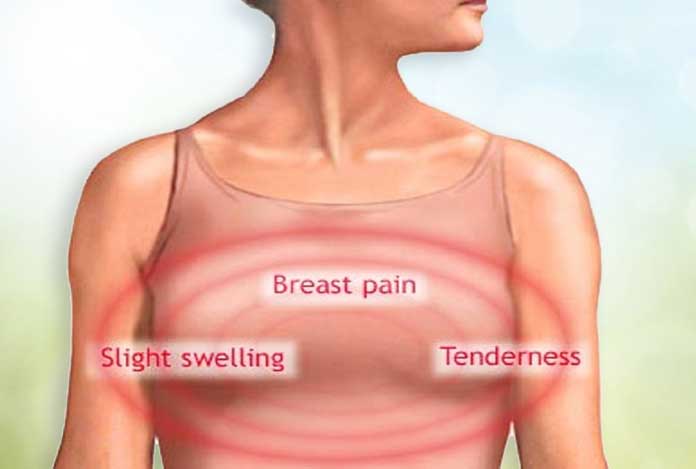
Risk Factors of Breast Cancer
Any woman can develop breast cancer. However, there are certain risk factors that predispose a woman to it. These are as follows.
- Age: The risk of developing breast cancer increases with age. Hence, breast cancers are mostly seen in elderly woman.
- Gender: Breast cancer affects both men and women. However, women are at a much higher risk than men.
- Race: White women are at a higher risk of developing breast cancer. However, the breast cancer that develops in African-American woman is more aggressive.
- Family history: It is a well-established fact that breast cancer runs in family.
- Past history of breast cancer: If a woman has a history of breast cancer in one breast, she is at a risk of developing cancer in her other breast.
- Past history of breast conditions: Certain breast conditions such as lobular carcinoma in situ and atypical ductal hyperplasia of the breast (characterized by abnormal division of cells) increase the risk of developing breast cancer.
- Past treatment history: Certain past treatment procedures or medications also predisposes a person to develop breast cancer. Women who have been exposed to radiation therapy or who have used diethylstilbestrol (a synthetic estrogen therapy) are at a greater risk of developing breast cancer.
- Breast tissue: Woman with dense breast tissue are at a higher risk of developing breast cancer.
- Menstrual history: It is believed that exposure to estrogen for a longer duration can increase the chance of developing breast cancer. If a woman begins her menstrual cycle early (i.e. early menarche) or ends her menstrual cycle late (i.e. late menopause), she is exposed to higher levels of estrogen for a longer duration, hence is at a higher risk of developing breast cancer.
- Oral contraceptive pills: Consumption of synthetic hormones in the form of oral contraceptive pills in past 10 years puts a woman at a higher risk of developing breast cancer.
- Post-menopausal hormone therapy: When a woman has approached menopause, she may feel some disturbing signs and symptoms. In such cases, doctors prescribe a combination of female hormones (estrogen and progesterone). Such hormonal therapy after menopause can increase the risk of breast cancer.
- Pregnancy history: Women with no history of pregnancy are at a higher risk of developing breast cancer. However, it must be noted that women who had their first pregnancy after the age of 30 are also at a greater risk of developing breast cancer.
- Breastfeeding history: It has been proven that breastfeeding for one and a half to two years reduces the risk of developing breast cancer.
- Obesity: Overweight and obese women are at a greater risk of developing breast cancer.
- Alcohol: Consumption of alcohol increases the risk of developing breast cancer.
There is a common misconception that use of deodorants and antiperspirants increase the risk of development of breast cancer. However, research shows no such association.
It must be remembered that the presence of these risk factors doesn’t necessarily mean that a woman will develop breast cancer. Also, many women develop breast cancer, despite the absence of these risk factors
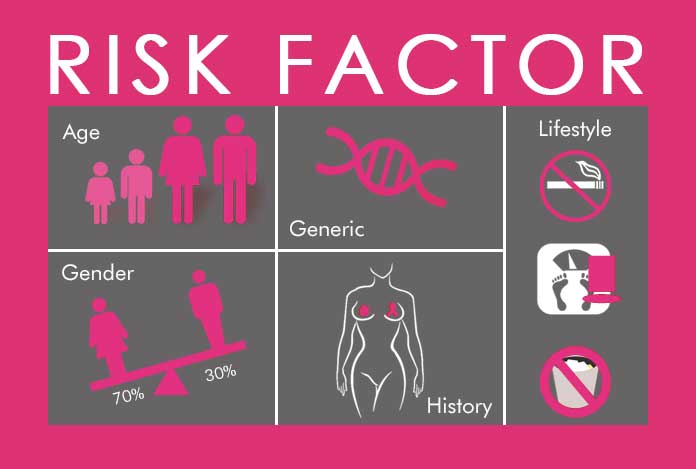
Do I have Breast Cancer?
If a woman feels a lump or thickening on her breast tissue which feels different that the surrounding tissue, it may point in the direction of breast cancer. However, not all breast lumps are cancerous and can be diagnosed only after appropriate investigations. Presence of a lump in the armpit is suggestive of spread of breast cancer to the lymph nodes and requires prompt treatment.
Tenderness in breast and nipples can be a normal symptom during the menstrual cycle of a woman. However, if the pain doesn’t subside with the cycle and there is a constant pain, it may be due to breast cancer.
If a woman is experiencing discharge from her nipples, especially a bloody discharge, she must seek medical help. It may not necessarily be breast cancer and can be a breast infection.
Any change in appearance of breast and nipples such as discrepancy in the size or shape of breast must be brought to the notice of a medical professional as it may be due to breast cancer.
Presence of any of the stated signs and symptoms with or without risk factors can be an indication of breast cancer.
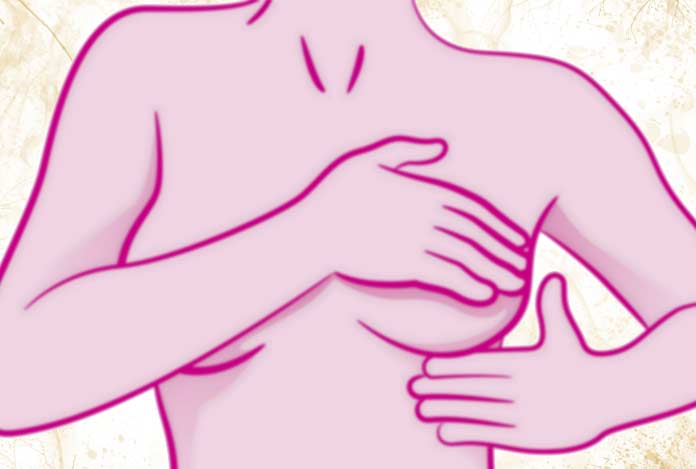
Causes and Prevention of Breast Cancer
Causes of Breast Cancer:
Research has shown that the only cause that can be attributed to the development of breast cancer is the genetic mutation which can be passed on to the next generation. In simpler terms, it is an alteration in the normal genetic make-up of an individual.
The most significant genes implicated in this context are Breast cancer gene 1 (BRCA1) and Breast cancer gene 2 (BRCA2). These genes have also been proven to be involved in the development of ovarian cancer.
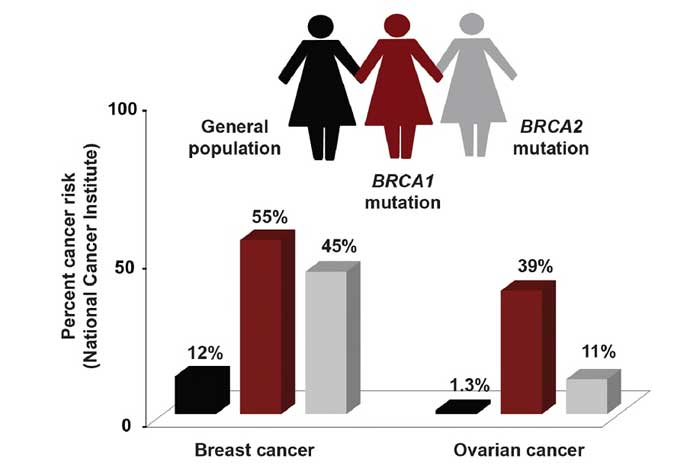
Prevention of Breast Cancer:
There is no particular way to prevent breast cancer. However, some lifestyle changes can help lower the risk of developing breast cancer. These are as follows.
- Self-examination of breasts: Knowing the normal breast appearance and anatomy can help a woman notice the development of an anomaly. A woman must keep examining her breasts for changes such as development of a lump or thickening, change in breast size and/or shape, change in skin of breast and nipples or presence of any discharge from nipples. Noticing such abnormality can help in early detection of breast cancer, thus making it easy to treat.
- Exercise regularly: As already stated, being overweight and obese predisposes a woman to development of breast cancer. Thus, it is essential to maintain a healthy BMI (Body Mass Index) by exercising regularly.
- Healthy diet: Research has shown that women who consume Mediterranean diet are at a lower risk of developing breast cancer. A Mediterranean diet typically consists of plant-based foods such as fruits and vegetables, supplemented with healthy fats such as nuts and extra-virgin olive oil.
- Abstinence from alcohol: The association of alcohol and breast cancer is an evidence-based fact. Women who consume alcohol are at a greater risk of developing breast cancer. Hence, alcohol consumption must be avoided.
Other than traditional preventive measures, in high-risk cases, doctors may recommend medical interventions to reduce the risk of developing breast cancer. These medical interventions are as follows.
- Chemoprevention (Preventive Medications): The basis of this method of prevention lies in the concept of hormone receptors present on the surface of breast cancer cells. In most of the cases of breast cancer, the surface of the cancer cells consists of hormone receptors, namely Estrogen Receptors (ER) and Progesterone Receptors (PR). Such breast cancers are known as hormone-sensitive breast cancers as these are influenced by the circulating hormones which act on these receptors to stimulate the growth of the tumor. In patients at a high-risk of developing breast cancer, doctor prescribes medications that block these hormones, such as selective estrogen receptor modulators and aromatase inhibitors. However, these medications have some major side effects, hence, these medications are only given to patients who are at a very high-risk of developing breast cancer.
- Preventive Surgery: Some women who are at high-risk of developing breast cancer may opt for removal of the breasts. This procedure is known as prophylactic mastectomy. Some women with cancer in one breast may choose to get the other healthy breast removed in order to eliminate the risk of developing breast cancer in other breast. This procedure is known as Contra-lateral prophylactic mastectomy.

Diagnosis and Tests of Breast Cancer
Some women may contact the medical professional on noticing signs and symptoms, while in other cases, it may be an incidental finding. Various diagnostic modalities are used by the doctor to diagnose breast cancer. These are as follows.
1. History of symptoms: A doctor asks all the details related to the symptoms being experienced by the patient, such as duration of the symptoms, severity of pain (if any), etc. These details help a medical professional in recognizing the condition and assessing the severity of the condition. Once a thorough history has been recorded, further investigations are carried out to confirm the diagnosis and to evaluate the extent of spread of the cancer.
2. Physical Examination: After recording a detailed history of the patient, including her past medical history and family history, doctor examines the breasts to check for any abnormality. If a lump or thickening is evident, doctor examines the various aspects of the lump such as its size, shape, consistency, tenderness, etc. Doctor also examines the lymph nodes of armpits to check for any swelling that may be suggestive of spread of breast cancer.
3. Mammogram: It is the medical term for breast X-ray. There are two types of mammograms.
- Screening mammograms: These are taken to screen the breast for the presence of any abnormality. A screening mammogram may show an evident lump on X-ray even before the onset of symptoms. Hence, it is recommended that women at high-risk must get frequent screening mammograms.
- Diagnostic mammograms: Once the screening mammogram shows the presence of an abnormality, a diagnostic mammogram is taken to establish a diagnosis. It also helps in further evaluation of the abnormality.
4. Breast Ultrasound: Ultrasound advocates the principle of utilization of sound waves to create an image of deeply-seated organs. It helps the doctor in determining the content of the breast tumor, whether it is a solid mass or a fluid-filled cyst.
5. Breast MRI: Magnetic Resonance Imaging (MRI) uses magnetic and radio waves to produce an image of the organ. A dye is injected into the patient’s body and an image of the breast is recorded to further investigate the tumor.
6. Biopsy: It involves the evaluation of the suspected breast tissue. A specialized needle is inserted to extract the core breast tissue from the suspected area. The extracted tissue sample is then sent to the lab for evaluation. This helps in determining the type of cancerous cells present in the tumor, the grade of the tumor and the presence or absence of hormone receptors on the cell surface. A definitive diagnosis of breast cancer can be made only after biopsy.
7. Other tests: Since breast cancer can be invasive and can spread to other body parts, thus it is essential for a doctor to assess the extent of spread of tumor. Various tests can be performed for this purpose, as described below.
- Chest X-ray: It helps in knowing whether the cancer has spread to the lungs or not.
- CT scan: CT scan of various body parts such as brain, lungs, etc. can be done to evaluate how far the cancer has spread.
- Bone scan: A radioactive dye is injected into patient’s body and a full-body scan is recorded. The dye gets deposited in the affected area of the bone, thus helps in assessing the spread of cancer.
- Positron Emission Tomography (PET) scan: It involves injecting a radioactive material which gets absorbed by rapidly-growing cancerous cells. PET scan helps in locating the spread of cancer.
Once the appropriate diagnostic test(s) is performed, the doctor determines the stage of the cancer. Most popular staging system used for breast cancer is TNM staging, where T stands for Tumor size, N stands for Nodal involvement by the cancer and M stands for Metastasis (spread of cancer to other body parts). Based on the TNM staging, cancer can be grouped into 5 stages, namely Stage 0 to Stage IV. Stage 0 is the least invasive and Stage IV is the most invasive. Thus, staging helps determine the treatment and recovery of the patient.
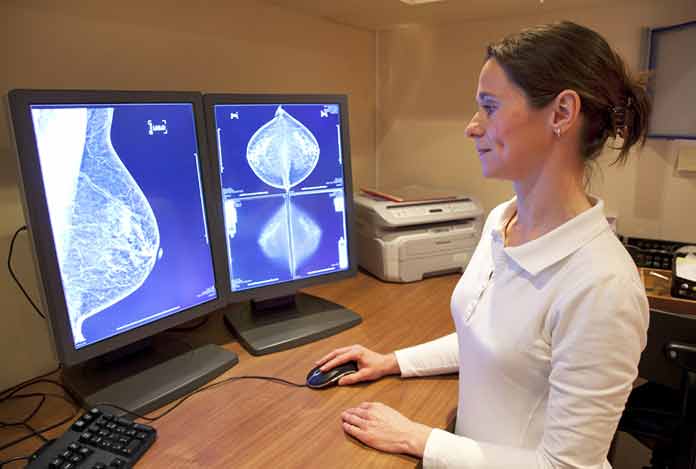
Treatment and Care of Breast Cancer
Treatment of Breast Cancer:
The treatment of breast cancer involves a team of doctors, namely an Oncologist (a doctor with specialization in cancer), a radiologist (a doctor with specialization in imaging modalities such as X-ray), a pathologist (a doctor who examines the biopsy tissue) and a surgeon.
Once breast cancer is diagnosed, treatment will depend on various factors which are listed below.
- The type of breast cancer
- Stage of Cancer
- Whether it is hormone-sensitive cancer or not
- Other factors such as age of the patient, her general health and her preferences.
Based on these factors, doctor decides the treatment procedure keeping in mind patient’s preferences. Various treatment options are as follows.
1. Surgery: It is required in most cases of breast cancer. Various surgical procedures that can be performed in breast cancer are described below.
- Lumpectomy: This procedure involves the removal of the lump and a margin of surrounding healthy tissue in order to prevent the spread of cancer. It is also known as breast-conserving surgery as only the abnormal tissue is removed. However, it is usually indicated in small tumors which can be easily removed surgically.
- Mastectomy: This procedure involves removal of entire breast tissue. However, newer techniques have emerged such as skin-sparing and nipple-sparing mastectomy, wherein the breast tissue is removed keeping the overlying skin and the nipples intact.
- Sentinel node biopsy: Sentinel node refers to the first node to receive the lymphatic drainage from the tumor. If suspecting spread of cancer, this node is removed and examined for the presence of cancerous cells.
- Removal of several lymph nodes: If the sentinel node shows an absence of cancerous cells, it suggests that cancer has not spread to other nodes. However, if the sentinel node shows the presence of cancerous cells, it is indicative of spread of cancer to other lymph nodes. In this case, several concerned lymph nodes are removed. In case of breast cancer, several axillary lymph nodes are removed.
- Reconstruction surgery: Mastectomy creates an aesthetic defect, hence it is usually followed by a reconstruction surgery. This surgery can be done at the time of mastectomy itself, or at a later stage.
2. Radiation therapy: As the name suggests, this therapy involves directing a high-energy radiation such as X-ray to destroy the cancer cells. This can be achieved by two ways.
- External beam radiation: This therapy involves directing radiation beam on the external surface of the affected area with the aid of machinery. This is usually indicated after lumpectomy.
- Brachytherapy: In this therapy, radioactive pellets or seeds are placed within the breast around the cancerous tissue. It may be used after lumpectomy if there is a low risk of recurrence of the cancer.
Radiation therapy eliminates the cancer cells remaining after the surgical procedure. However, it may cause some side effects such as fatigue and redness or rash at the irradiated area. Rarely, it may cause serious side-effects such as damage to lungs or heart.
3. Chemotherapy: This therapy involves the use of drugs, called as cytotoxic drugs which destroy the cancer cells. Based on the time of initiation of treatment, chemotherapy can be of three types.
- Adjuvant Chemotherapy: This is given after surgery to destroy the cancer cells which may have escaped the surgery as these cells can grow and replicate leading to recurrence. However, it is not given in some types of breast cancer where the risk of recurrence is low.
- Neoadjuvant Chemotherapy: This type of chemotherapy is given before surgery. This is usually given in case of large tumors which may pose difficulty during surgical removal. Such tumors are first reduced in size by administration of chemotherapy, followed by surgical removal.
- Chemotherapy for advanced stage: When cancer has spread to distant organs, chemotherapy can be given to arrest the metastasis.
Chemotherapy may cause some side-effects such as hair loss, vomiting, fatigue, loss of appetite and increased susceptibility to infections.
4. Hormone-blocking therapy: It is indicated in hormone-sensitive breast cancers to prevent recurrence. As already described, hormones such as estrogen and progesterone may act as growth promoters in some breast cancers. Thus, certain medications can be given to block this action. Examples include,
- Estrogen-receptor blockers such as tamoxifen
- Aromatase inhibitors such as letrozole.
These drugs are usually given after surgery, but, may be given before surgery to reduce the size of the tumor.
5. Biological Treatment or Targeted Therapy: This therapy involves administration of drugs which specifically target cancer cells and destroy them. Examples include Trastuzumab, Lapatinib, etc. This therapy has lesser side-effects than chemotherapy as it has a targeted action.
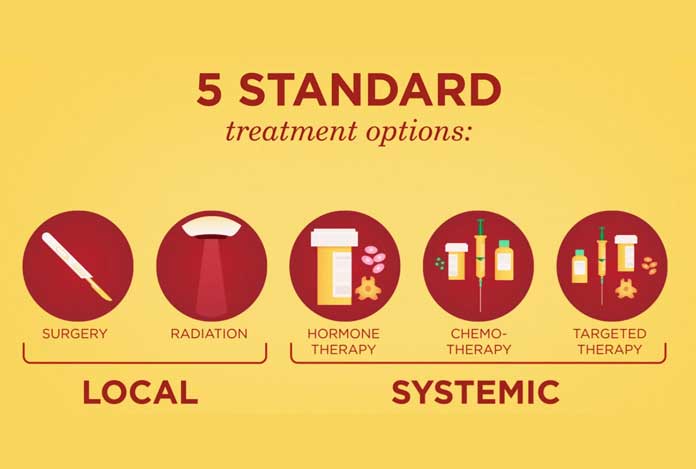
Care for Breast Cancer:
A diagnosis of breast cancer can be emotionally traumatizing for a woman. At this point, it is important for family members and peers to make the patient believe that breast cancer can be treated and managed well if prompt treatment is sought.
Women undergoing treatment for breast cancer may be experiencing symptoms like fatigue, nausea etc. during and after the treatment. Family care should complement the medical care in such women.

OTC Medication and Self-Management Methods for Breast Cancer
OTC Medication for Breast Cancer:
All the drugs used for treatment of breast cancer require a prescription. The use of vitamin supplements and antioxidants during and after treatment of breast cancer has been a controversial matter and no research has substantiated their beneficial effects yet.
Self-Management Methods available:
Women with breast cancer have to face physical, social and emotional problems. The most common concerns seen in these women are fear of recurrence, acceptance of change in body image and life roles and an uncertain future.
Various self-management methods are available for breast cancer. These methods aim at easing-up the life of such women from diagnosis to treatment and post-treatment. These methods are described below.
- Education about disease: The prerequisite to effectively manage any disease is to know about the disease. Women diagnosed with breast cancer must discuss with the health-care professional about their disease condition. Factors such as the type of breast cancer, the appropriate treatment modality, side-effects of the treatment and chances of recurrence must be discussed with the doctor. This prepares the women for future complications and helps them cope with the situation.
- Cognitive-behavioral stress management: This approach involves a conversation of the patient with the health-care personnel, discussing the hardships faced by her and the interventions to improve the quality of life.
- Support groups: This is an effective self-management strategy in breast cancer. In this method, the cancer patients dealing with the implications of disease and treatment, actively participate in group discussion. This group is mostly led by a cancer survivor. Through these discussions, the patients support each other in their struggle against cancer.

Natural ways to cure Breast Cancer
Other than the conventional lifestyle changes and self-management strategies, there are various natural home-remedies that have been advocated to be beneficial in breast cancer. These are mentioned below.
- Garlic: It is a well-known natural antibiotic and reduces the occurrence of infections such as bacterial, fungal etc. Research has shown the presence of alkyl sulfur compounds in garlic which makes it an effective anti-cancer agent. It causes the cancer cells to undergo natural death, a process medically termed as apoptosis. It also boosts the immunity against cancer cells.
It is recommended to consume garlic in raw form than coked form to achieve desirable results. - Grapes: Grapes contain proanthocyanins, a compound that reduces the estrogen production of body. As already mentioned, estrogen acts as growth-promoter in some cases of breast cancer. Hence, grapes are particularly effective in hormone-sensitive breast cancer.
Grape juice or extract should be consumed daily for effective results. - Wheatgrass: It is known to suppress the growth of cancer cells. It also boosts the immune system and helps in elimination of toxins from the body.
It can be consumed in raw form or in the form of juice. - Green Tea: Because of the anti-inflammatory property of green tea, it is very useful in breast cancer.
A tea bag is usually placed in a cup of warm water and simmered for 3 to 5 minutes. This is followed by removal of tea bag and consumption of tea. - Vitamin D: Research has shown that women who eat Vitamin D enriched food are at a lower risk of developing breast cancer.
Rich sources of Vitamin D include eggs, milk etc. - Yoga: Yoga has been shown to be effective in all stages of breast cancer treatment. It reduces fatigue and improves the sleep quality in patients. Various yoga poses that have been shown to be effective in breast cancer are cat cow pose (Marjaryasana), seated side bend (Parsva Sukhasana) and fish pose (Matsyasana). However, a prior discussion with doctor is recommended.
- Acupuncture: In this method, sterile needles are inserted at specific points on skin, called as “acupuncture points”. Then, the needles are moved. Acupuncture helps relieve symptoms such as nausea, hot flashes, fatigue and pain.

Health Tip by Experts
There is no definitive way to prevent breast cancer. Hence, experts recommend that women at a high-risk of developing breast cancer must incorporate lifestyle changes to reduce the risk to a certain extent. Also, it is important that every woman must be aware of the symptoms of the disease, so as to seek early treatment.

